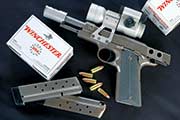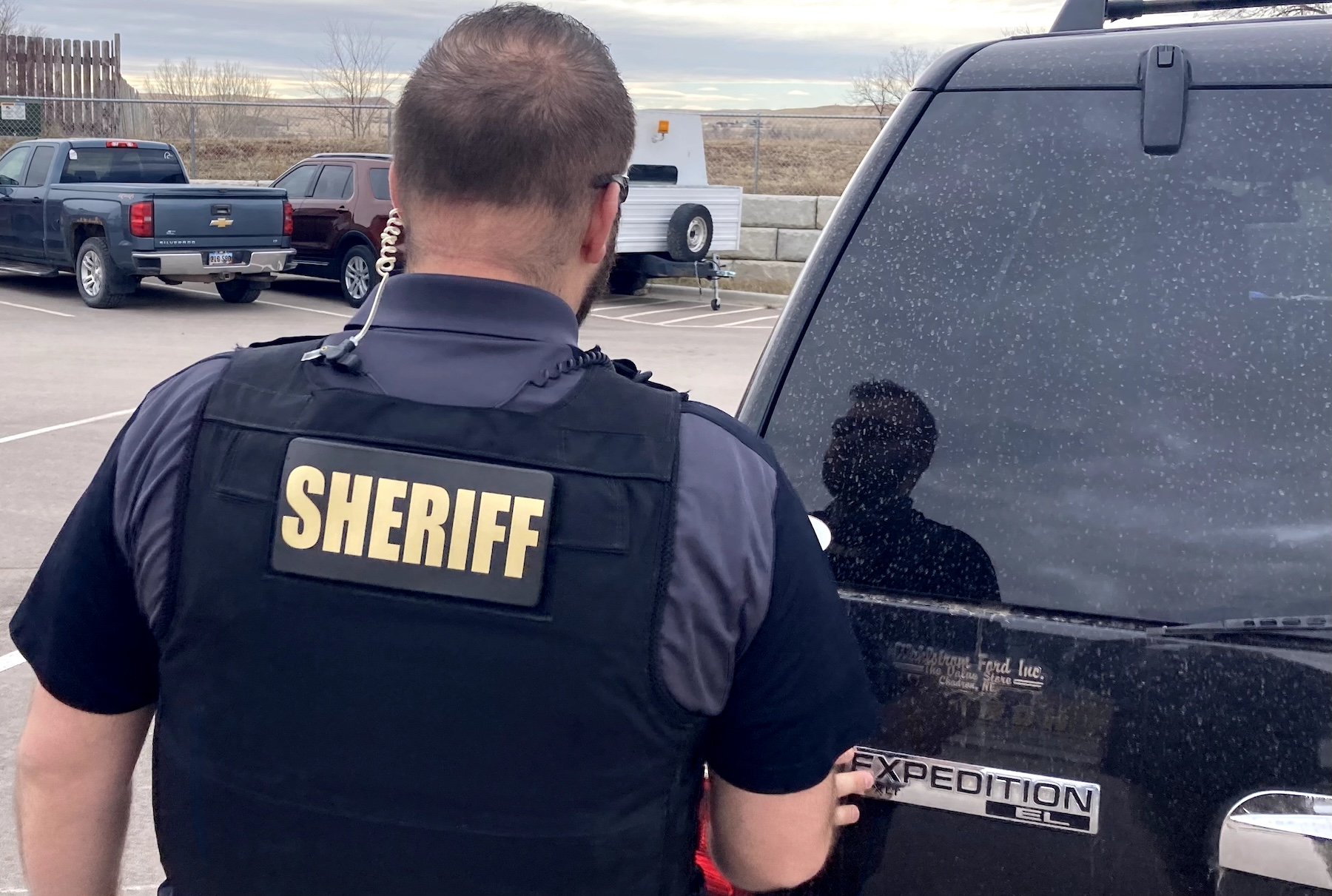
tactics180
By Jeremy Clough
There’s a lot of truth in the idea beginners talk hardware and professionals talk software. Professionals know hardware matters, but surprisingly little of it is usually required to get the job done when it comes to defensive shooting.
Mechanical devices fail. The more mechanical devices you rely on, the greater the odds one of them will fail. You might clutter your pistol with goodies thinking they will make you better. But you don’t need them. Someone once said you have the “perfect” thing not when you can’t think of anything else to add, but when you can’t think of a single thing you could take away.
Technology is amazing, but what do you really need on a defensive pistol?
Sights, trigger and reliability.
While point shooting has been enjoying a resurgence recently, and certainly has a place in the defensive toolbox, you can’t rely exclusively on the idea you’ll only be in a defensive encounter occurring at arm’s length. You don’t get to pick the fight you’re in. Sights count, and you need ones you can see quickly, especially the front sight. Lasers can help, but you still need sights.
First of all, the electrical do-dads are mechanical devices, which do what? Right. They break. They also depend on batteries, which can run down. Don’t misunderstand me: I’m not against lasers. But they can’t replace iron sights.
Iron sights should be easy to see, and snag-free. I’m not a fan of the sights with a sharp ledge so you can use the sight to cock the gun on your pants pocket or something. Even assuming the technique is safe (you invariably wind up pointing the gun at yourself), you’re more likely to have to manipulate your gun in the traditional way, in which case that sharp ledge will probably cut your hand. Remember the goal of defensive shooting is not getting hurt. Is there an outside chance in the world that it could possibly help? Sure. Do you need it? Not likely.
Distilled to the basics — like this Les Baer model — means
the gun has everything it needs to work, and nothing it doesn’t.
Trigger
Sight picture and trigger control are the two most important elements of pistol accuracy. Clint Smith makes a good point about how jerking the trigger often causes more misses than an incorrect sight picture. While proper trigger press is a training issue, and a good shooter can overcome a truly lousy trigger, there’s no need to make things harder than necessary. The trigger needs to be crisp and creep-free, which is more important than overall weight. A cleanly breaking trigger will often feel far lighter than it actually is.
The trigger must also be safe and not light enough you torch off a round accidentally under stress. While there are pistols with lighter triggers, four pounds is a good minimum for a defensive pistol. It should also have an easily-felt reset so you can quickly feel the point in the reset when you can press the trigger again if needed.
Photo: Wayne VanZwoll
Reliability
This isn’t only a matter of equipment and modifications, but also maintenance. The gun has to work — you’re literally betting lives on it. While it’s nice for a semi-auto to run with every load you put in it, most calibers come in such a broad range of bullet profiles and power levels you can probably find some rounds which will malfunction. These are often lightweight target rounds or ultra-high-velocity frangible bullets.
Some guns aren’t intended to fire everything. Some micro-nines are only designed to function with high-pressure defensive ammo. As a rule I expect a pistol to run with ball and hollowpoints from the major manufacturers. In any event make sure the recoil spring, sights and magazines are all adjusted so the round chosen works and hits to point of aim.
The magazine is also easily overlooked. A semi-auto pistol is a carefully-timed thing, and once the slide comes back, the magazine has to push the next round up into the feed position in time for the slide to pick it up before it closes. Hotter +P ammo increases slide velocity, reducing the time available for the mag to do that, so you need to make sure your mags are up to the task. When I carried a .45 Super, I replaced mag springs frequently as they tired. Recoil springs, in my experience, also tend to die far more quickly than their estimated lifespan.
A defensive pistol has to hit, and work every time. That’s what you need. Once the sights and trigger are squared away, and the pistol is and stays reliable, then we can talk factors helping you make the most of the gun’s performance, like ergonomics and other things you may want. All that later, though.
Read More Tactics & Training Articles
Purchase A Password To Read The Sept/Oct 2016 Digital Edition
(Includes FREE Download of PDF version for your desktop or mobile device!)
Purchase A Printed Copy Of The Sept/Oct 2016 Issue
Purchase A PDF Download Of The Sept/Oct 2016 Issue Now!

















